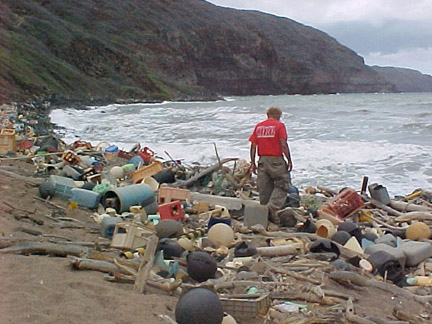I make it a mission to not be wasteful. But waste, as it were, comes with the territory. It is a part of the human experience.
That the creation or production of waste is unavoidable, the key is to not be unnecessarily wasteful; in other words, make the most of what we have and waste as minimally as one can, regardless of commodity, be it time, money, energy, water or whatever. I think that’s a pretty good rule of thumb to have.
The nitty-gritty
From solid and liquid waste making up the waste stream itself, to that of gases entering and fouling air, soil, water (pollution that is naturally occurring or otherwise), and every other kind imaginable under the sun in between (biodegradable and non-biodegradable alike), it is all of it waste, the most common forms being refuse, sewage, pollution.
So, as is plain to see, waste is broad-based.
Waste is anything discarded. Refuse, you know, wrap (wrappers) or packaging, it by far makes up the biggest percentage. That which is not recyclable in large part ends up in landfills. Please be mindful that some recyclable material finds its way to landfills as well. But the lowdown is this: The more waste there is that can be reused or recycled, the better.
The above, well, it’s a mouthful and there is a lot here to chew on and digest – metaphorically speaking, and in relegating solid, non-recyclable refuse to the garbage pail, waste bin and landfill, seeing exactly where all of this – the second “stationary-sources-sector” installment – is going, is really not all that difficult: waste (and disposal) coverage is what we’re talking about!
Waste and disposal thereof – from: “Garbage disposal: Rubbish not just for burning and dumping anymore” (Jan. 28).
“‘Agricultural burning is currently a significant source of air pollution in the San Joaquin Valley, responsible for more than ten tons per day of particulates and more than 15 tons per day of smog forming chemicals,’ noted the SJVAPCD [San Joaquin Valley Air Pollution Control District].”
This quote, from “Agricultural burn phase-out begins,” published in the Jul. 2005 “Valley Air News” issue, a SJVAPCD publication, was in reference to the practice of the burning of agricultural waste in farm fields in California’s San Joaquin Valley.
I further explained that: “In California, Senate Bill 705, passed in 2003, stipulated that open-field agricultural burning was to be banned, and implementation of the bill was to be carried out in stages,” three stages actually, these being:
- June 1, 2005: Field crops, most pruning and weed abatement;
- June 1, 2007: Orchard Removals;
- June 1, 2010: Pruning from crops harvested off the ground, vineyard removal and removal of diseased materials.
The process involved in the disposing of solid waste is what it is. Done in a sustainable way, though that may be a difficult undertaking, it can make all the difference.
From the same “Garbage disposal” article:
“Handling refuse sustainably is a difficult and, yes, dirty job, but by doing such, in the long run, it could be well worth the extra effort. But more than that there is another benefit: Air is spared in the process from waste not being burned.”
Meanwhile, in “Putting pollution in its place about town, at home, on the job” (Oct. 12), detailed are ways to put and get pollution under control, one of those having everything to do with waste collection and handling.
Next up in Part 3, energy generation.

Image above: U.S. National Oceanic and Atmospheric Administration
– Alan Kandel